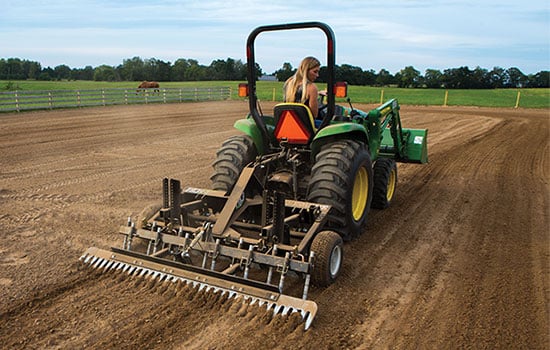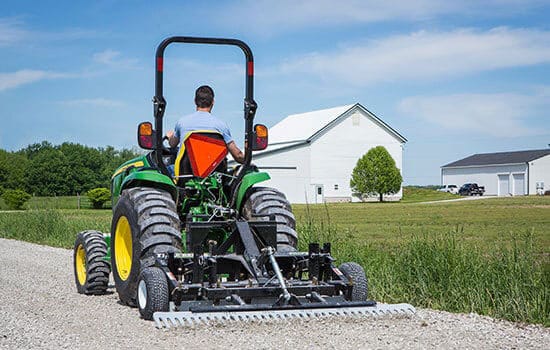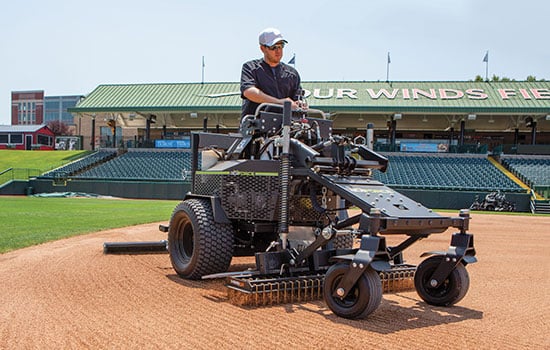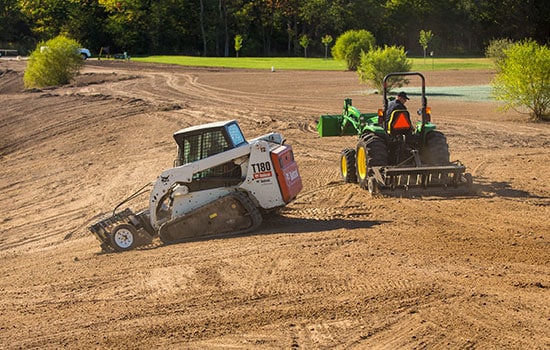Give your manure spreader a Spring tune-up – ABI DIRT
Transcript
Hi everyone, Matt Metzger here with ABI attachments. Welcome back to another episode of the ABI dirt. And you might be able to tell that things look a little bit different today. Our friends in engineering, left us a manure spreader to play with. So today we’re going to make the best of a situation of having a manure spreader half torn apart in the middle of the R and D shop. And I want to take this opportunity to walk you through a couple of maintenance points, touch points that will be helpful to you as you enter into the spring season. So a lot of you I know have been composting your manure all winter long. It’s warming up. You’re ready to look at those pastures and get out and spread a little bit. So let’s take a look at what you can do to your manure spreader, to prolong the life make your life a whole lot easier all summer long and help prevent any down age or downtime throughout the season. Since you’ve got those maintenance items taken care of right now, let’s take a look.
All right, so here we go. Some quick and dirty maintenance tips on your ABI classic manure spreader no matter what size you’ve got. We’re currently here, right sit at the wheel of an 85 ground drive unit. So again, engineering has this unit partly torn apart. So if you see some bearings missing and some mounts missing, that’s, let’s just roll with it. This is not a finished product. If you want a closer look a full walkthrough on an 85 ground drive unit we’ll be doing one of those in a couple of weeks. Once we get this put back together for you. But so this is just going to be some pre spring breeze season maintenance tips to make your life easier throughout the summer. We’re going to start here and work our way from the ground up. First of all, here in the tire there’s three things you can do to keep your unit maintain. First up you see a greaser down here that goes into the hubs. So make sure you keep that grease. It’s a great time this year to do that.
So right here, before we get started also and here’s a great example because we didn’t tighten our lug bolts back down. Cause again, we’re working on the unit, go through your unit make sure your lug bolts are all the way tight and check your tire pressure and the pressure mounts here on the edge of the tire. So those three things are right here at the tire quick and easy to take care of.
All right. So now, we’ve moved to the back of the unit here. So you can see we’ve got our safety guards off and so that we can expose the chain. So make sure remember twice a year go ahead and grease oil up this big chain. Make sure you don’t have any rust issue on the touchpoints there. You can also see with these safety guards off that we try to make it really easy on you with these different stickers, to point out where all your different greasers are for the different bearings. Since we are here on the left side or driver’s side of the unit, that this is the chain mechanism down into this side of the spreader that runs the widespread and the shredder paddles. So you’ve got a number of bearings that you’ve got to work with down here. All of which have their subsequent grease points. Spring is a great time to get those greased up.
All right, so I’ll spare you the walkthrough in all of the different grease points for all the different bearings. Just remember check your owner’s manual. Look for those stickers. Take a nice slow walk around the unit. Anytime you see one of those stickers, you know you’ve got a greaser close by make sure to pump some grease into those bearings. It’s just going to save you a lot of headache later on. Now another point and one of the last points we’ve got today is the tension on your web chain your apron chain that actually moves the manure down to the end, so it can be shredded up and spread it out. So we recommend on our apron chain and slats here down low we recommend about three inch gap between that polyflor with that Lifetime warranty and the space where you can lift up this chain. So here’s how to test this out. Walk up to your spreader be right beside the tire here, reach in, pull this chain up and you should be able to get about three inches of space. If you’ve got three inches, you’re dialed in, you’re good. That’s the right amount of tension. If you’ve gotten more than that just with the wear and tear that comes on those chain links rubbing after years and years you might need to change the tension and I can show you how to do that.
All right. So here on the front of the unit of the 85 ground drive we’re talking about how to adjust that tension. If you’ve lifted up that chain and those slats and you see that you’ve got four or five inches and you want to bring that tension back down that way you don’t get any big rocks or anything stuck underneath there. This is where you do it. So these Sprockets up here are actually mounted to a plate that slides back and forth so that you can increase the tension on that apron chain. So we’ve got two bolts on the side of the unit both of those need to be loosened up that loosens the plate up so it can slide where you want it to go. And then this bolt head here is what needs to be turned and adjusted so that you can move that Sprocket either if you’re too tight to get it closer to the body, right. So you’ve got more Slack or if you’ve got too much Slack on your apron chain then you can bring that Sprocket forward creating more tension. And once you’ve got it, then just make sure to tighten these two bolts right back down so you can keep the tension that you’ve got.
That’s all I’ve got today. As far asthe quick maintenance tips. Again, I know that spring season is a time for a lot of us to get out there spread the manure that’s in the compost pile. Just strongly encourage you to take the extra couple of minutes to grease the bearings put air in the tires, check your lug bolts. It’s just going to save a lot of headaches later on. I’d rather you be working in those procedures now than once you load up for the first time and you realize, Oh you need to need to grease something up. So take the time. Do it now before you get started, you’ll be a lot happier. Save a lot of time, save a lot of stress. That’s all I’ve got for today until next time everyone, take care.



